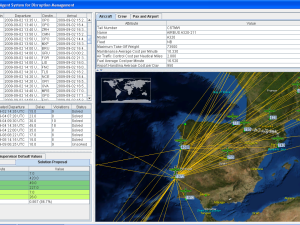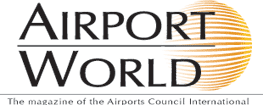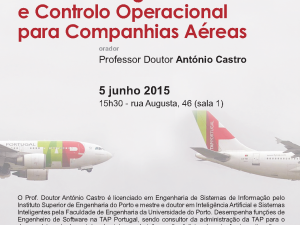Studies have estimated that irregular operations can cost between 2% and 3% of the airline annual revenue [1] and that a better recovery process could result in cost reductions of at least 20% of its irregular operations [2]. Consider the specific case of TAP Portugal, that according to the 2010 Annual Report, had an annual revenue of EUR 1.986,3M. The irregular operations could have had an estimated cost between EUR 39,7M to EUR 59,5M. A better recovery process could thus mean a yearly cost reduction between EUR 7,94M to EUR 11,9M.
Problem and Current Approach
Figure 1 shows a typical example of a disrupted flight and its consequences. As it is possible to see, flight TP1953 from Porto to Lisbon has a scheduled time of departure (STD) at 08:00 and a schedule time of arrival (STA) at 08:50. The aircraft is an Airbus A320 with crew qualified for that aircraft and it has 145 passengers (pax) onboard: 91 pax stay in Lisbon, 34 pax have another flight departing from Lisbon at 10:00 (STD) and 20 pax another one departing at 09:30 (STD). Finally, the aircraft CS-TNA and its crew will perform another flight departing from Lisbon at 10:15 (STD).
Figure 1-An example of a disruption
Due to a known but unexpected event (e.g., aircraft malfunction, late arrival of aircraft from a previous flight) the flight has an estimated time of departure (ETD) at 09:00 and an estimated time of arrival (ETA) at 09:50, that gives a one hour delay if nothing is done to solve the problem (circle 1). The consequence of this delay is:
- Flight 1821 will be delayed due to the late arrival of the aircraft from the previous flight (circle 2).
- The 20 passengers for flight TP231 and the 34 for flight TP350 will miss the connection (circle 3 and 4).
- Loss of passenger goodwill, not only for the passengers that miss the connections but, also, for the passengers that have as the final destination Lisbon.
- If any of the crew members has a scheduled flight other than the TP1821 that flight may also be delayed.
A disruption has an impact in any or all of the following dimensions: aircraft/flight, crew and passenger. A solution should be integrated, i.e. one that includes a solution for each of the dimensions without imposing an order of importance to any of the dimensions. An example of an integrated solution is: to swap the aircraft with on from a later flight plus to call a reserve crew and to present new itineraries for each of the disrupted passengers. Having the set of possible integrated solutions we want the one that minimizes flight delays, passenger trip time and costs.
Typically, the Airline Operations Control Centers (AOC) as well as the current solutions proposed by other researchers [3], follows a sequential approach according to Figure 2.
This sequential approach imposes a natural order of importance restricting to much the last dimensions to be solved and, as such, making more difficult to get the best integrated solution.
Proposed Solution
Figure 3 shows our new approach to disruption management in airline operations control. We propose the use of the Multi-Agent System (MAS) paradigm to represent each of the roles that exist in the AOC, including the preferences and goals of the roles that represent each dimension. For example: aircraft, crew and passenger managers and supervisor. Each one will be represented by an autonomous software agent with decision autonomy and learning capabilities. These agents are also rational in the sense that they will try to maximize its individual utility. Each manager agent look for the best (local) solution to its dimension and cooperate with the others with the expertize they have in their own dimension. Through an automated negotiation process, called Generic Q-Negotiation (GQN), the supervisor chooses the best integrated solution according to the global interest of the airline company. The MASDIMA (Multi-Agent System for Disruption Management) is a prototype developed according to our proposed solution. It integrates information from other systems and users. For example: maintenance personal, passengers (via smartphones/tablets), crew members (smartphones/efb), datalink/acars (data from the aircraft), alternative transportation systems (buses and trains) and an electronic market of aircraft and crew members.
Figure 3- A New Approach to Disruption Management
MASDIMA is capable of monitoring the operational plan and deciding if an event requires or not an action. It is autonomous with decision making capabilities and automates the repetitive tasks; it is adaptive to changes on the environment (includes learning capabilities); it is dynamic and provides solutions in almost real-time and allows the inclusion of a human-in-the-loop to improve the user acceptance of the solutions found automatically by reacting and learning the preferences of this user.
Experimentation and Expected Cost Reduction
Several experiments were performed using real data from one month operations of TAP Portugal and we compared eleven different approaches. Results show that it is possible to have a cost reduction between 17% and 58% considering only the average cost for aircraft and crew and between 13% and 48% if we consider the average of the combined aircraft, crew and passenger cost.
References
[1] Crew scheduling models in airline disruption management, Xindu Chen and Xin Chen and Xinhui Zhang, IEEE 17Th International Conference on Industrial Engineering and Engineering Management, 2010.
[2] Airline Irregular Operations, M. E. Irrang, The Handbook of Airline Economics, Air Transport Association of America, pp. 34-365, 1996
[3] A Distributed Approach to Integrated and Dynamic Disruption Management, António J. M. Castro, PhD Thesis, FEUP, University of Porto, Portugal. July 2013.








